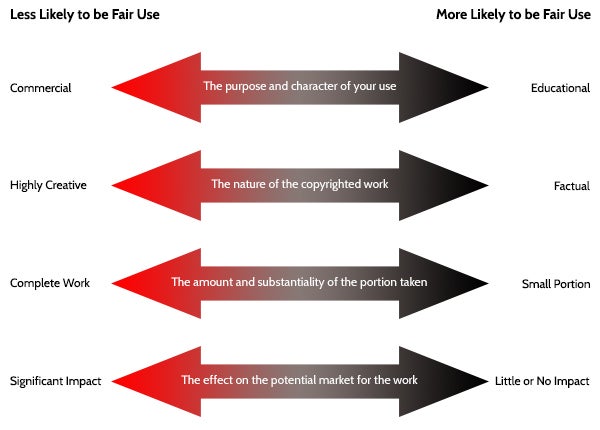What is Fair Use?
Fair use is a concept embedded in U.S. law that recognizes that certain uses of copyright-protected works do not require permission from the copyright holder. (See Title 17, section 107)
Oftentimes, fair use is the legal concept that allows for reproductions of portions of a copyrighted work without the author's permission for educational purposes, as well as remixes in art and use of content for commentary.
The following four factors are used to determine if a use is fair:
- The purpose of the use (eg. commercial vs. educational)*
- The nature of the copyrighted work
- The amount of the material used (the greater the amount copied, the less likely it is fair use)
- The effect of use on the potential market for or value of the work
There is no formula to determine fair use and no one right answer to whether or not your intended use of a copyrighted work is "fair".
Tools to help you Determine Fair Use
- Fair Use Analysis Tool: guides users through the process of determining if a use is fair. Developed by The University of Minnesota Libraries.
- Fair Use Evaluator: helps users collect, organize, and document the information they may need to support a fair use claim, and provides a time-stamped PDF document for the users’ records. Developed by the American Library Association, Office for Information Technology Policy.
Legalities
This page is offered for informational purposes only.
- The contents of this page do not constitute legal advice or a legal opinion
- The information resources listed here have been compiled from a variety of sources
